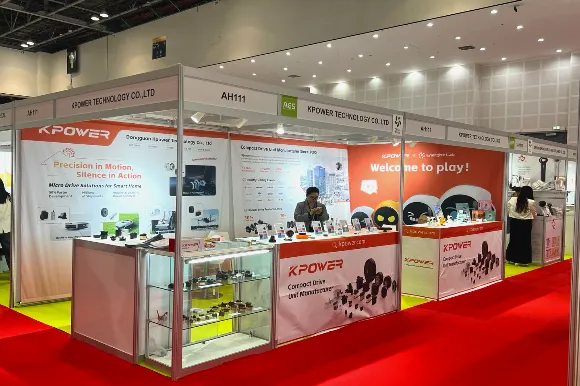Diving Into the World of Servo Motors and Arduino
Imagine building a robotic arm that picks up objects at your command or creating an automatic camera slider that smoothly moves along a track. At the heart of many such projects are servo motors—small, powerful, precise, and versatile components capable of rotating or positioning objects with remarkable accuracy. When paired with Arduino microcontrollers, they become an essential toolkit for hobbyists, students, and engineers alike.

Understanding the Servo Motor
Before delving into setup instructions, it’s helpful to understand what a servo motor actually is. Unlike standard DC motors, which rotate continuously when powered, a servo motor offers controlled rotation within a range—usually up to 180 degrees—making it ideal for precise positioning. Its internal circuitry includes a small motor, a gear train, a feedback potentiometer, and a control circuit. This design allows the servo to receive commands, compare its current position to the desired one, and adjust accordingly.
Types of Servo Motors
Servo motors come in various types, but the most common in hobbyist projects are:
Standard Servos: Offer up to 180° rotation, suitable for typical control applications. Continuous Rotation Servos: Spin 360°, used for wheels or continuous movement. Digital vs. Analog Servos: Digital servos tend to be more responsive and hold positions more accurately.
Why Use Arduino for Servo Control
Arduino’s popularity stems from its simplicity, affordability, and extensive community support. Its ease of programming, combined with dedicated libraries like Servo.h, allows even newcomers to control servo motors with just a few lines of code. The victory lies in transforming a simple circuit into an interactive, functional machine.
Essential Components for Setting Up a Servo with Arduino
Here’s a quick list of the essentials:
Arduino board (Uno, Mega, Nano, etc.) Servo motor (standard size for hobby projects) Power supply (battery or DC power supply, depending on your servo’s voltage requirements) Jumper wires (male-male or male-female depending on your setup) Breadboard (optional, for neat wiring) Resistors or additional components (if needed for specific configurations)
Getting Started: Building Your First Servo Control Circuit
The excitement begins with wiring. You don’t need a complex setup—just a few connections to get your servo ready for commands from your Arduino.
Wiring the Servo Motor
Most hobby servos have three wires distinguished by color:
Red: Power (+V, usually 5V) Brown or Black: Ground (GND) Yellow or White: Signal (PWM input)
Here’s a typical wiring approach:
Connect the red wire to the Arduino’s 5V pin. Connect the brown/black wire to GND on the Arduino. Connect the yellow/white signal wire to a PWM-capable digital pin on the Arduino (for example, pin 9).
Note: Many servos can draw more current than the Arduino’s 5V pin can supply, especially under load. For such cases, a dedicated power source is recommended to avoid damaging your Arduino.
Power Considerations
If your servo demands more power (which is common), it’s safer to power the servo separately and share a common ground with your Arduino. This setup prevents voltage dips and resets caused by high current draw.
Programming Your Arduino: The Basic Sketch
Once your hardware is wired, it’s time to program. Arduino’s Servo.h library simplifies controlling the servo.
Here's a basic code snippet:
#include Servo myServo; // create servo object to control a servo void setup() { myServo.attach(9); // attaches the servo on pin 9 } void loop() { myServo.write(0); // move servo to 0 degrees delay(1000); // wait 1 second myServo.write(90); // move servo to 90 degrees delay(1000); // wait 1 second myServo.write(180); // move servo to 180 degrees delay(1000); // wait 1 second }
This simple code moves the servo to three different positions with pauses in between. It’s an excellent starting point to understand how to control servo movement programmatically.
Testing and Troubleshooting
After uploading the code, observe your servo. If it moves as expected, congratulations! If not, check connections, ensure your power supply is adequate, and verify that your code uses the correct pin and servo model.
Common Challenges
Jittering or unsteady movement: Often caused by insufficient power or loose wiring. Servo not moving: Check connections, try different pins, or test the servo independently with a direct power source. Overheating: Continuously commanding the servo to move rapidly or to its limits can cause overheating—use delays or limit the range.
Expanding Your Setup
Once comfortable with basic control, you can explore:
Panning or tilting cameras Automated robotic arms Remote control via Bluetooth or Wi-Fi Sensors integration for intelligent movements
Each adds layers of complexity and excitement, transforming simple projects into sophisticated automation devices.
Stay tuned for Part 2, where we will delve into advanced control techniques, calibration, and real-world application ideas to elevate your servo motor projects with Arduino.
Leveraging innovations in modular drive technology, Kpower integrates high-performance motors, precision reducers, and multi-protocol control systems to provide efficient and customized smart drive system solutions.




































